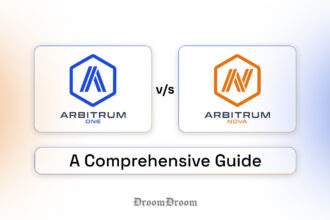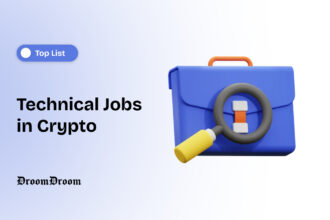Let’s talk about stepping into a world where you control your social media presence—really control it. Where each post, each share, each “like” isn’t just a blip on someone’s profit chart, but a coin in your pocket.
SocialFi, a meld of “social” and “finance,” is not merely a concept; it’s a shift in the axis of online interaction, transforming the everyday “like” and “retweet” into financial currency.
SocialFi is emerging as Web3’s audacious answer to the monopolistic designs of traditional platforms, presenting a digital world where ownership is no longer a myth, but an inalienable right.
The Roots of the SocialFi Movement: Outgrowing Web2
In the Web2 era—an era ruled by giants like Facebook, Instagram, and Twitter—the platform dictated the game. The “free” nature of these platforms concealed an insidious trade: your data and attention became their product.
Think back to the unsettling truth coined in that pithy phrase, “If the product is free, you are the product.” Over half of the world’s population pours hours into these platforms daily, and yet, users remain, at best, onlookers in the lucrative playground of ad revenue. This has created a broken social contract, an economy that profits from engagement without ever rewarding its source.
With SocialFi at the forefront, offering users a tangible stake in the networks they populate. Through decentralized networks and DAOs (Decentralized Autonomous Organizations), SocialFi has begun to rewire the very structure of social media by giving governance power to the community, not a corporate boardroom.
The Tools of SocialFi: Tokens and DAOs
In the SocialFi ecosystem, your social presence is your currency. Imagine social tokens—digital representations of an individual’s or a community’s brand equity—operating as both financial assets and gatekeepers of engagement.
These tokens are, quite literally, money where your mouth is. Influencers and content creators issue tokens in their name, and the more influence or community clout they hold, the higher their token value. Want to send a message to a celebrity or ensure your comment sits at the top of their feed? Better hold some of their tokens.
SocialFi’s first movers have seen staggering growth. Friends with Benefits (FWB), for instance, launched as a token-gated Discord group and soon after became a DAO, growing into what some have called a “Web3 digital city.”
FWB managed to raise $10 million in funding at a $100 million valuation, with its token, FWB, skyrocketing nearly tenfold in value—from $17.69 to $190.69. The power and value of this model are evident, and FWB is not alone: platforms like Torum, which received backing from Kucoin Labs, and Monaco Planet, funded by Three Arrows Capital, are banking on the SocialFi potential.
DAOs also feature heavily in SocialFi. Unlike Web2 platforms that answer to shareholders, these organizations run on decentralized governance, letting users make or influence decisions directly.
The structure of a DAO keeps platform control from conglomerates and keeps your data away from the corporate backroom. DAOs serve as the ultimate moderators, governing user interactions, policies, and even financial incentives, all managed collectively by token holders.
Owning Digital Identity with NFTs
Digital ownership has long been a shaky concept in social media—ask any creator who’s watched their content or identity co-opted, reposted, or censored. SocialFi brings clarity here by allowing users to create NFTs of their content and profiles, granting them irrefutable proof of ownership.
The concept of PFP (Profile Picture) NFTs has surged, with assets like Bored Apes and CryptoPunks becoming symbols of personal brand. As one enthusiast put it, “I am my ape, and the ape is me,” reflecting the bond between user and digital asset in the $18 billion market for PFP NFTs.
NFTs are more than mere profile symbols; they unlock exclusive communities and premium content. Imagine a musician who mints an album as an NFT, offering token holders a share of the profits or early access to tracks.
SocialFi flips the script on how content is distributed and monetized, no longer making creators subject to the whims of platform algorithms or ad metrics.
Censorship: The Decentralized Path to Freedom of Speech
The digital age has seen social media devolve into spaces that swing between overreach and neglect when it comes to censorship. As platforms attempt to balance freedom of speech with community standards, many users and creators find themselves caught in the crossfire.
SocialFi platforms offer a unique alternative by decentralizing control over content through blockchain-led curation, where on-chain data can be parsed, labeled, and curated by individual nodes rather than a central authority.
If a harmful post does appear, it’s up to each user to engage with or block it, shifting responsibility back to individuals rather than hiding it behind corporate decisions.
The Economic Machine: Monetizing Engagement
Unlike Web2 platforms, where revenue streams flow primarily from ad dollars and brands, SocialFi’s economy is entirely self-sustaining. Social tokens allow creators to craft their own financial ecosystems.
An influencer can monetize engagement directly—likes, shares, comments—all come at a token cost, reducing spam and encouraging genuine interaction. It’s a system where the most invested audience members become financially tied to the success of the creators they follow.
In a world where “spam” costs money and only high-quality, relevant engagement thrives, SocialFi might just end the era of mindless scrolling. For creators, the benefits are even richer.
They’re no longer forced into one-size-fits-all monetization models but can create tiers, set exclusive access prices, or even share revenue from ad deals with token holders. The aim? To align incentives squarely between creators and their followers.
The Roadblocks: Scaling and Stability
As SocialFi starts gaining traction, it faces the elephant in the room: can it scale? To put things in perspective, Facebook alone generates 4 petabytes of data every day. DeSo, one of the major blockchain platforms built for SocialFi, claims its purpose-built structure can handle 80 posts per second for a four-million-user base, but scaling to a billion remains a long shot.
Infrastructure solutions like warp sync and sharding are at play to mitigate these issues, yet SocialFi’s readiness for mass adoption is still a question mark.
There’s also the economic challenge. “Hype is real,” as recent activity on platforms like Friend.tech and Stars Arena shows. Thousands of users flocked to buy “shares” of each other’s accounts, often speculating rather than genuinely investing. Security breaches, such as Stars Arena’s $3 million hack, only amplify concerns.

For SocialFi to mature, it must offer sustainable models that withstand hype cycles without spiraling into a frenzy of speculation or risky financial contagion.
Why SocialFi Matters
With Elon Musk acquiring Twitter, there’s already speculation that platforms with huge social pools might integrate SocialFi aspects. Imagine a future Twitter where followers can monetize their own tweets or reward favorite creators with social tokens.
It’s this potential for integration that positions SocialFi as more than just a fad but as a key pillar of the emerging Web3 ecosystem. As younger users grow increasingly disillusioned with data misuse and centralized control, SocialFi offers a breath of fresh air—a social economy that respects both individual privacy and creative control.
For anyone questioning SocialFi’s future, here’s the kicker: if Web3 achieves its promises of decentralization and control, SocialFi will do for social media what Bitcoin did for finance. As blockchain applications grow, those first to embrace and engage with SocialFi may indeed be “the owners of the new internet.”




















